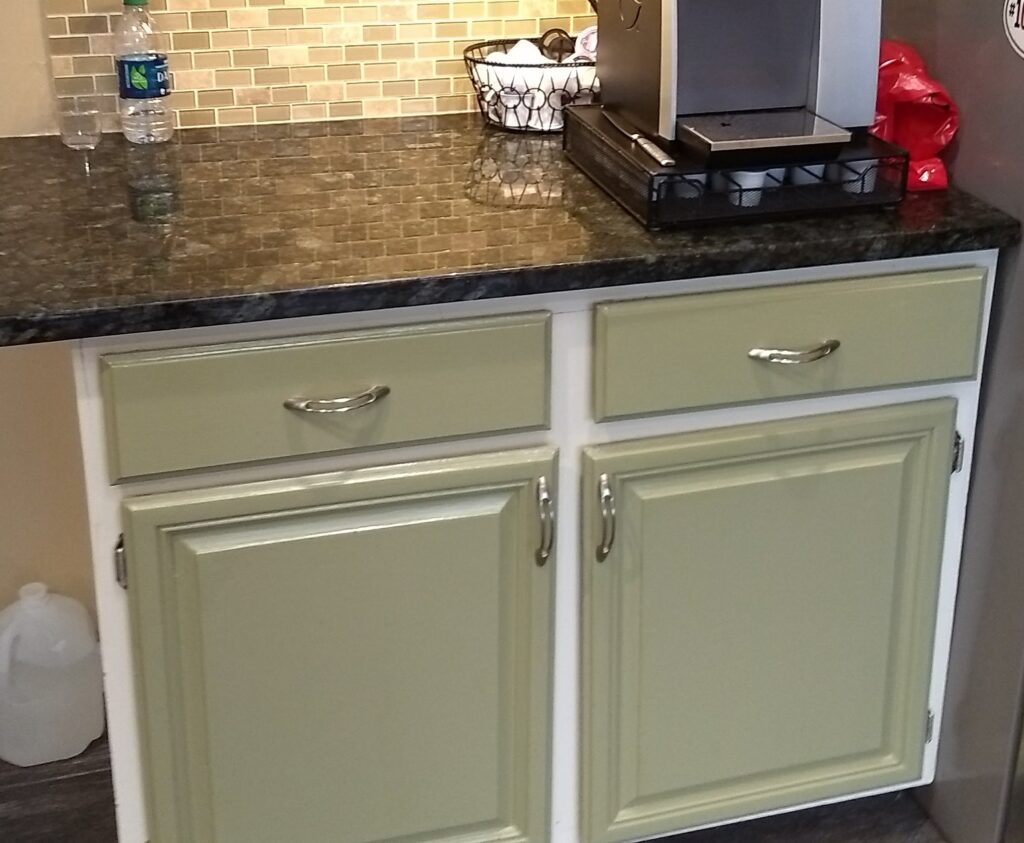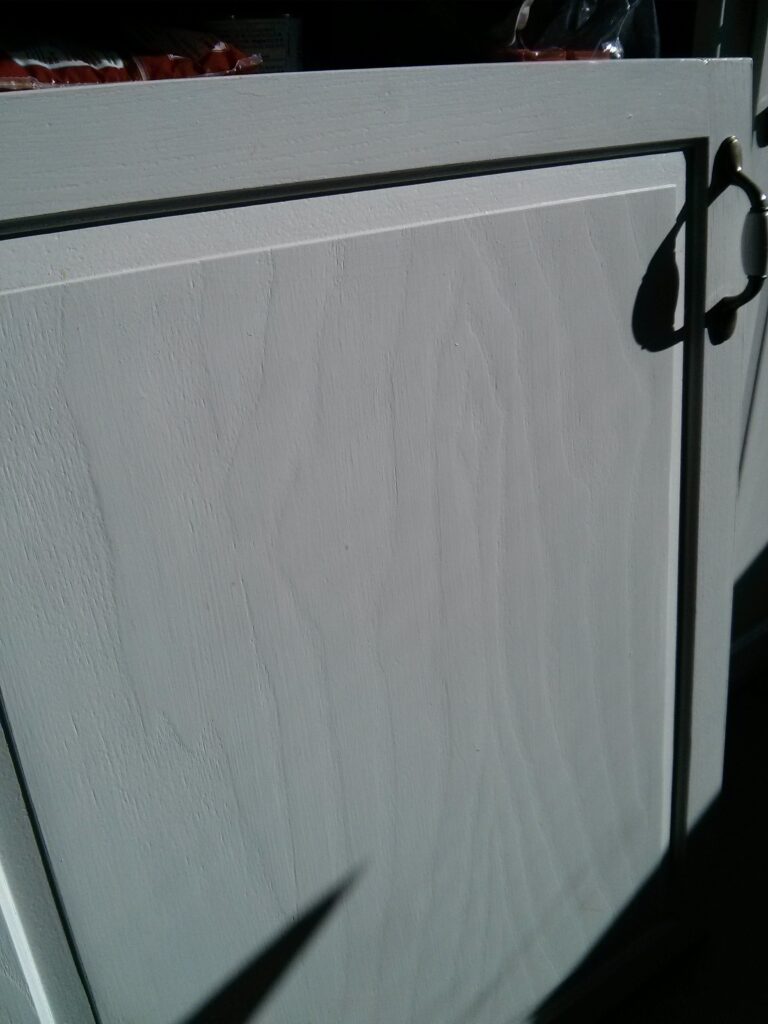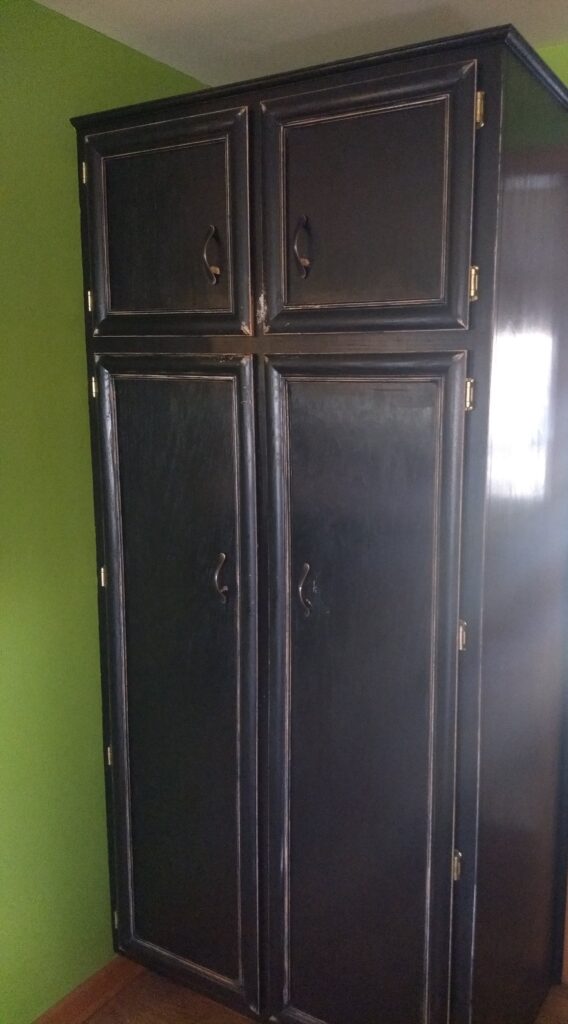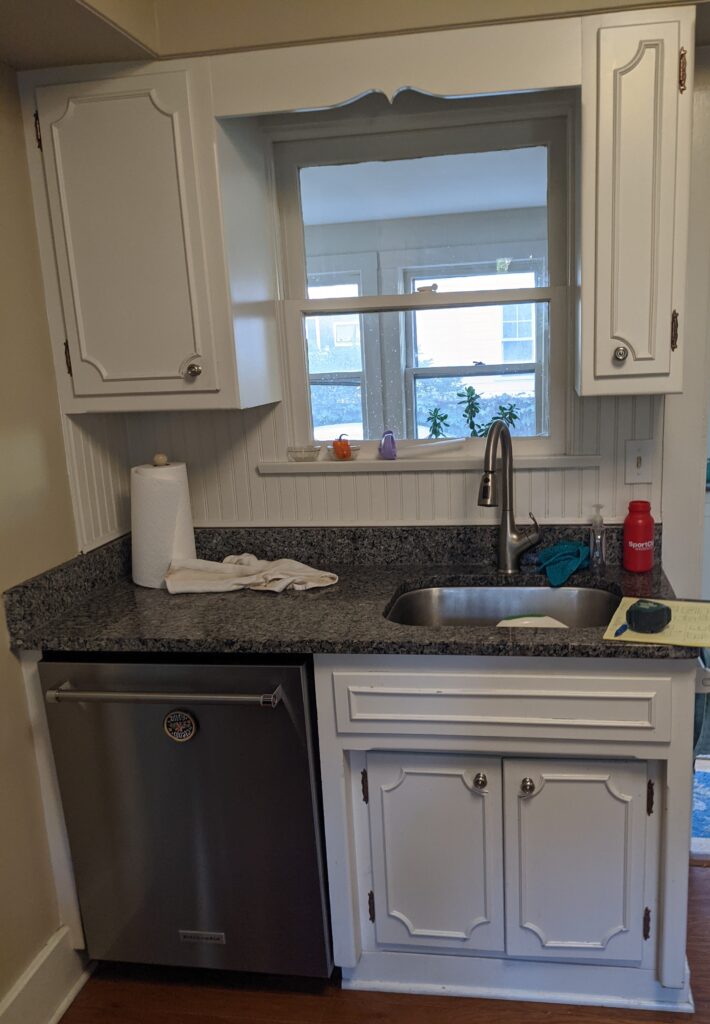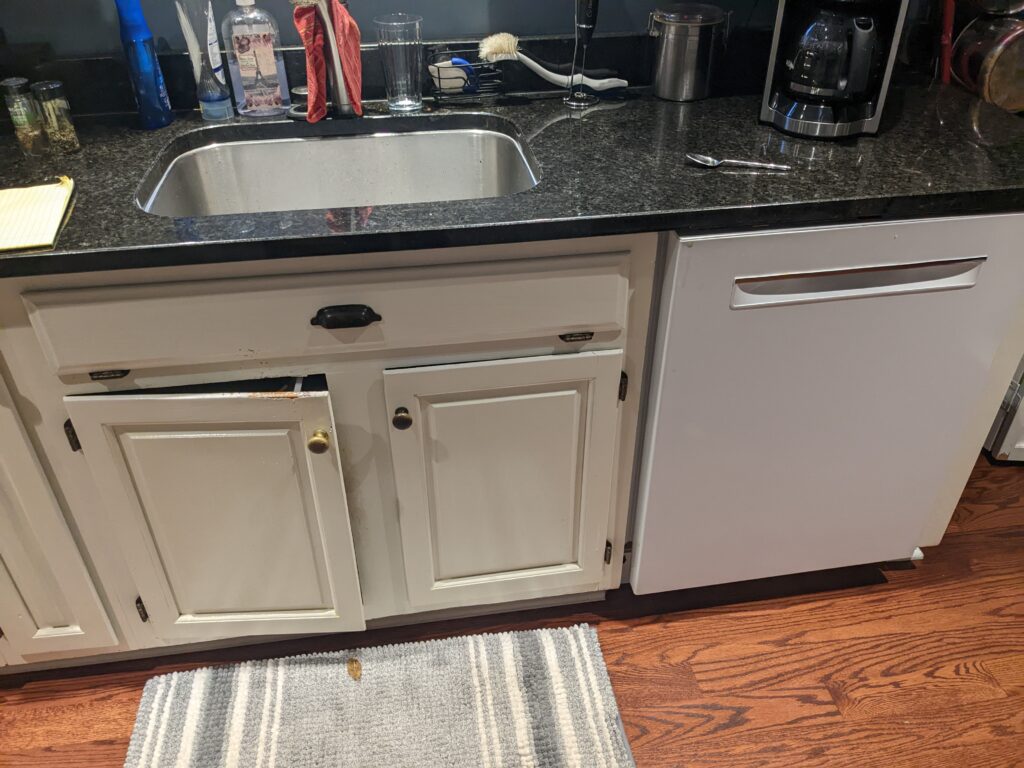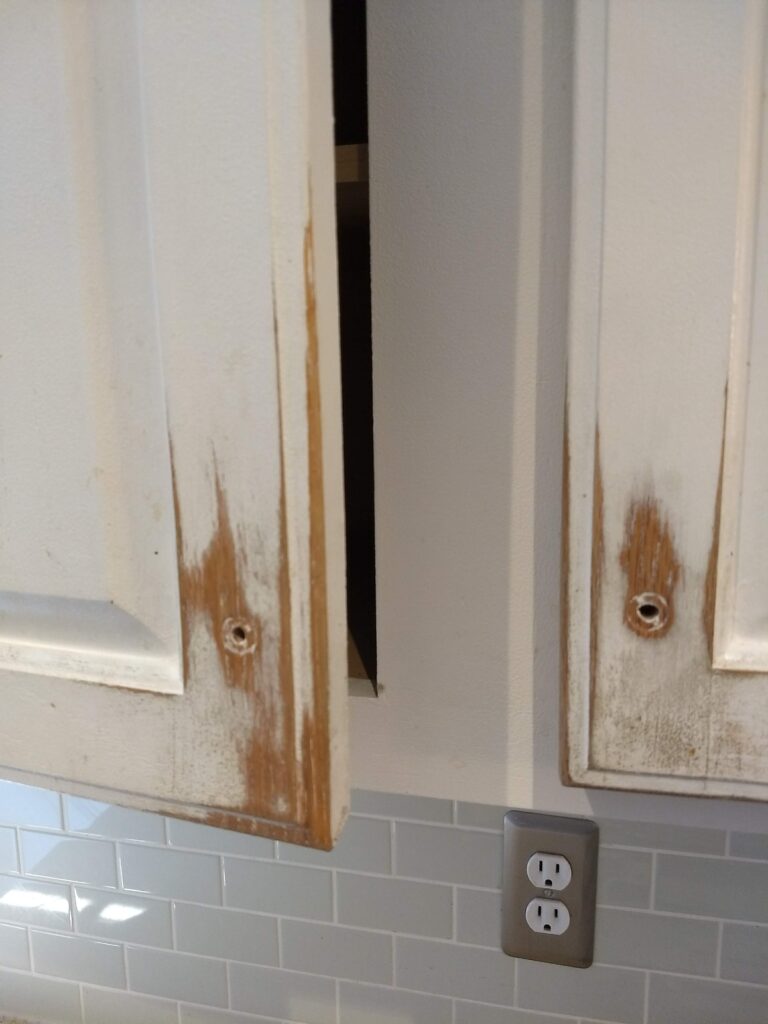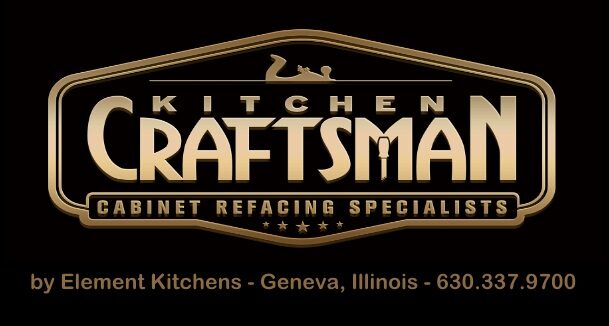Refacing with Real Wood
There are a few different approaches to updating cabinets. I favor real wood, hands down. Here’s why:
Back in the 80’s, my parents had a big, well-known company reface our kitchen using wood-grain plastic laminate. All the faux grain on the doors and drawers ran in the same direction. It was pretty awful. Fast forward 40 years and plastic laminates are still being used, but now the names have changed – RTF (rigid thermofoil), 3D high-pressure laminates, phenolic resins – but at then end of the day they’re all still various forms of plastic.
RTF and 3D Laminates
(and why I don’t use them )
Rigid ThermoFoil, or RTF , means the doors and drawer fronts are generally made out of Medium Density Fiberboard (MDF) with a plastic film bonded to the surface (RTF). A problem I often see on these type of doors is on the door edges. Where the plastic or RTF makes a sharp bend at the corners a small crack can develop. When water enters through the crack in the finish, the fiberboard underneath will swell up and can cause the rest of the plastic to de-laminate. Once a plastic RTF door starts to fail, there’s really no saving it. It cannot be painted or touched up, only replaced. To further complicate things, the laminates can tend to yellow slightly over time, so even if you find a replacement, getting it to match can be difficult.
So why do people use RTF or 3D laminates? Cost. They’re quite a bit less expensive than a true maple frame door with a post-cat solid color finish. And while cost is always a factor – I’ve always believed in doing a project once and doing it right.
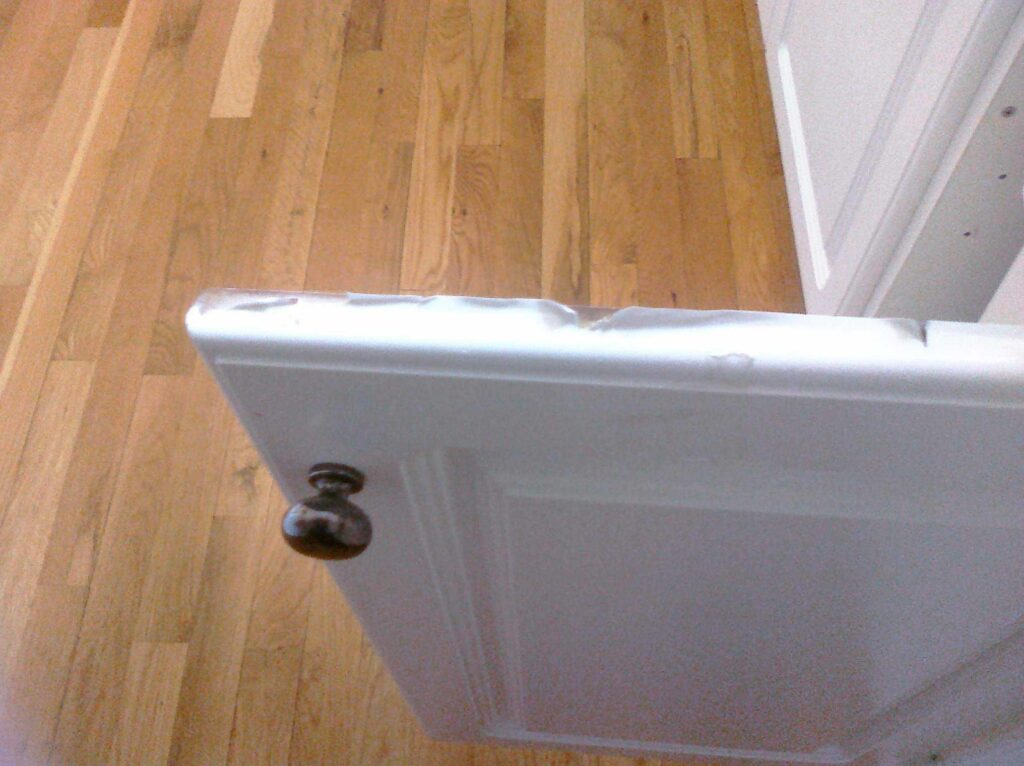
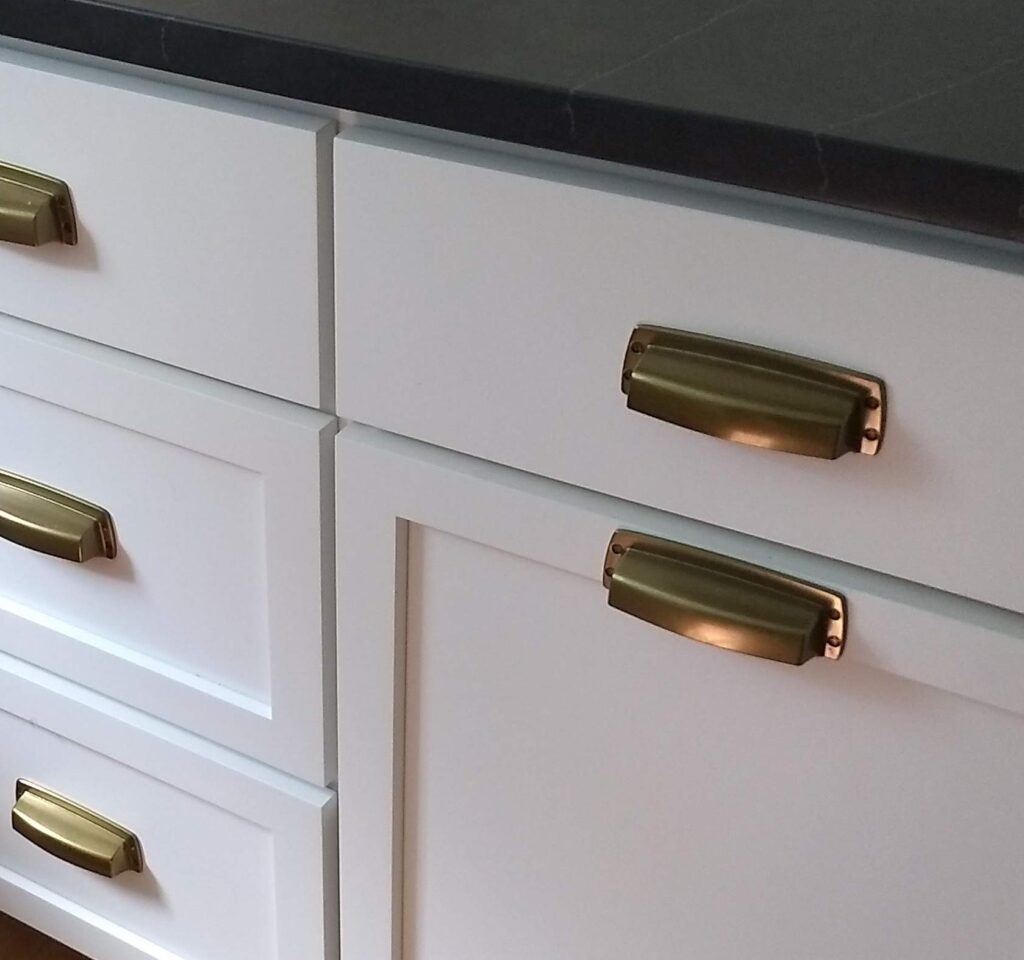
Solid Maple Frame with Factory-Applied Catalyzed Finish (why I use it)
If you’ve ever saved a picture of a kitchen on Houzz or Pinterest or in a magazine, chances are the doors are solid wood frame, 5-piece doors. (5 pieces means 4 separate pieces make up the frame and the 5th is the center panel).
It’s the way quality cabinetry has been made for many years. The corners and edges are clean and crisp.
The current state-of-the-art in cabinet finishes is called a pigmented, post-catalyzed conversion varnish. It’s a tough, perfectly uniform, satin sheen finish.
For natural woods like cherry or rift-sawn white oak, the post-cat is clear to protect and highlight the beauty of the wood grain.
Painting the Existing Cabinets.
Probably about one third of the cabinets that I reface tried painting them first. The issues I hear most often from customers are that the finish just didn’t hold up very well, the texture of the oak grain was still visible and they were still stuck with the same old door style, the big spaces between doors, the visible hinges and the wonky door that doesn’t line up or close properly.
Maybe okay for a quick turnaround, but personally, I just haven’t seen a lot of good long-term outcomes when the existing cabinets are painted.
